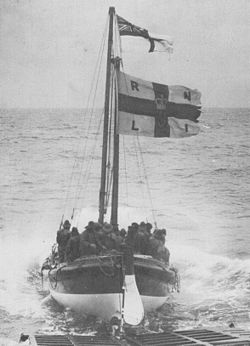 H.F. Bailey ON670 | |
| History | |
|---|---|
| | |
| Owner | Royal National Lifeboat Institution (RNLI) |
| Builder | J. Samuel White at Cowes on the Isle of Wight. |
| Official Number | ON 670 |
| Donor | Legacy of Henry Francis Bailey, Brockenhurst, Surrey. |
| Station | Cromer |
| Laid down | 1923 |
| Fate | Moved to Great Yarmouth & Gorleston on 5 May 1924, where she served until 1939 |
| General characteristics | |
| Type | 'Norfolk & Suffolk' type |
| Length | 46 ft 6 in (14.17 m) overall |
| Beam | 12 ft 9 in (3.89 m) |
| Installed power | Single Weyburn Diesel engine of 80 bhp (60 kW) |
RNLB H F Bailey (ON 670) was the first Royal National Lifeboat Institution (RNLI) lifeboat powered by a motor, that served from Cromer Lifeboat Station.
